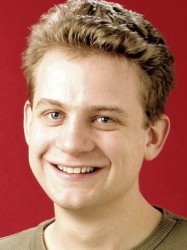Summary
Research Interests
I work on the production of ultracold molecules and their applications in quantum science and tests of fundamental physics. For more information about my research, please visit the Centre for Cold Matter. My current projects include the following:
Measuring the electron's electric dipole moment (eEDM). This is a test of physics beyond the Standard Model of particle physics. We are building an experiment that will determine the eEDM by measuring spin-precession in a beam of ultracold molecules.
Cooling molecules to quantum degeneracy. My group was one of the first to apply laser cooling to molecules. We are currently able to cool molecules to a few microkelvin and trap them for several seconds. We are now studying collisions at low temperature and plan to use collisional cooling to increase the phase-space density towards quantum degeneracy. A Bose-Einstein condensate of dipolar molecules will be a fascinating system to study and an ideal starting point for investigating many-body quantum physics.
Molecules in ordered arrays. We make reconfigurable arrays of traps using tightly-focussed laser beams. These are called tweezer traps. Each trap holds a single molecule. Our aim is to make small arrays of molecules with dipole-dipole interactions, and use this to build quantum gates and study many-body quantum physics.
Molecule chip. We are building a chip that can trap molecules a few microns above a surface. We aim to integrate these chip-scale traps with superconducting resonators and reach a regime of strong coupling between a single molecule and a single microwave photon.
Molecular clock. I am interested in making a clock based on the fundamental vibrational frequency of a molecules. This could be used as an ultra-precise frequency standard in the mid infrared, and as a tool for measuring the time-variation of fundamental constants. This work is part of the QSNET collaboration.
Atom interferometer network and observatory. I am a member of the AION collaboration. We aim to use atom interferometry to explore the nature of dark matter and provide a pathway towards detecting gravitational waves from the very early Universe and from astrophysical sources in the mid-frequency band ranging from several mHz to a few Hz.
Publications
Journals
Ho C, Wright S, Sauer B, et al., 2023, Systematic errors arising from polarization imperfections in measurements of the electron’s electric dipole moment, Physical Review Research, Vol:5, ISSN:2643-1564
Mukherjee B, Frye MD, Le Sueur CR, et al., 2023, Shielding collisions of ultracold CaF molecules with static electric fields, Physical Review Research, Vol:5, ISSN:2643-1564
Bird RC, Tarbutt MR, Hutson JM, 2023, Tunable Feshbach resonances in collisions of ultracold molecules in ²∑ states with alkali-metal atoms, Physical Review Research, Vol:5, ISSN:2643-1564
Ho C, Lim J, Sauer B, et al., 2023, Measuring the nuclear magnetic quadrupole moment in heavy polar molecules, Frontiers in Physics, Vol:11, ISSN:2296-424X, Pages:1-10
Zhang C, Tarbutt M, 2022, Quantum computation in a hybrid array of molecules and Rydberg atoms, Prx Quantum, Vol:3, ISSN:2691-3399, Pages:1-17

